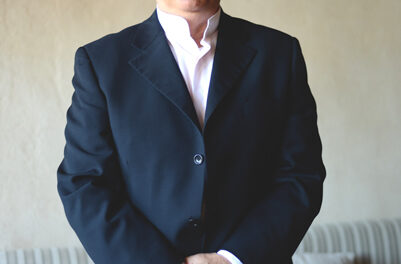The North Carolina Symphony, unlike the Boston Symphony Orchestra, does not have a separate institution for popular music. The Boston Pops Orchestra dates back to 1885 and since 1930 has had its own conductor separate from that of the BSO. Indeed, in almost a century there have been only three – Arthur Fiedler (1930-1979), John Williams (1980-1993), and Keith Lockhart (1995- ). Grant Llewellyn, music director of the NCS, has had close ties with Boston, the Boston Pops, and the Boston Symphony Orchestra, and so it is especially appropriate that Llewellyn was at the podium for the tribute to the man who has created symphonic music heard by more ears than anyone else in America, John Williams, who celebrated his eighty-first birthday in February. The orchestra was wearing its white jackets for a “pops” concert, but there was nothing of popular vocal genres here, no rock, or jazz – just the deservedly popular music from a composer who has a knack for finding the common chord with the mass audience. It was instructive to be able to hear the master’s stylistic habits in a setting separate from screen action.
Two commonalities are his idiomatic brass writing and ability to write an infinite variety of significant patterns for the snare drum, both evident in his Olympic Fanfare and Theme, written for the Summer Olympics of Los Angeles, in 1984. This was followed by the melancholy Theme from Schindler’s List, featuring a fine solo turn for the NCS concertmaster, Brian Reagin, on violin. Representing Williams’ concert music was the atmospheric two-movement concerto for harp, On Willows and Birches, performed by guest Ann Hobson Pilot, the work’s dedicatee and longtime harpist for the BSO. This was a beautiful piece, in a much more demanding idiom drawing on the vocabulary of the French school, with moments recalling Stravinsky and even Messiaen, and rendered wonderfully by Hobson Pilot (with amplification so discreet that only the eyes revealed it was there). The Theme from J.F.K. (yet another Boston connection, peculiarly appropriate in this week) featured an exceptional trumpet solo by Paul Randall over a string pedal. And finally Llewellyn started to roll out the big artillery with the “Raider’s March” from Raiders of the Lost Ark, which concluded the first half.
The music that all were waiting for was the sugarplum of the Star Wars Symphonic Suite, drawn exclusively from the initial Star Wars film (1977), later known as Episode IV: A New Hope, with six sections, including the opening sequence, and the final triumphal scene and closing credits. Llewellyn brought Chewbacca on to say a few words before starting (Llewellyn translating, noting that Chewie speaks a form of Welsh). The audience applauded each section, and provided a final ovation that brought Llewellyn and the NCS back for an encore of the theme from Jaws. A wonderful evening with brilliant performances that one hopes will be followed by more such in the future (I am sure that many here in North Carolina would love a Williams program with the music from the Harry Potter soundtracks, not to mention the “Imperial March” for Lord Vader, omitted from the program since it only makes its first appearance in Episode V: The Empire Strikes Back).












